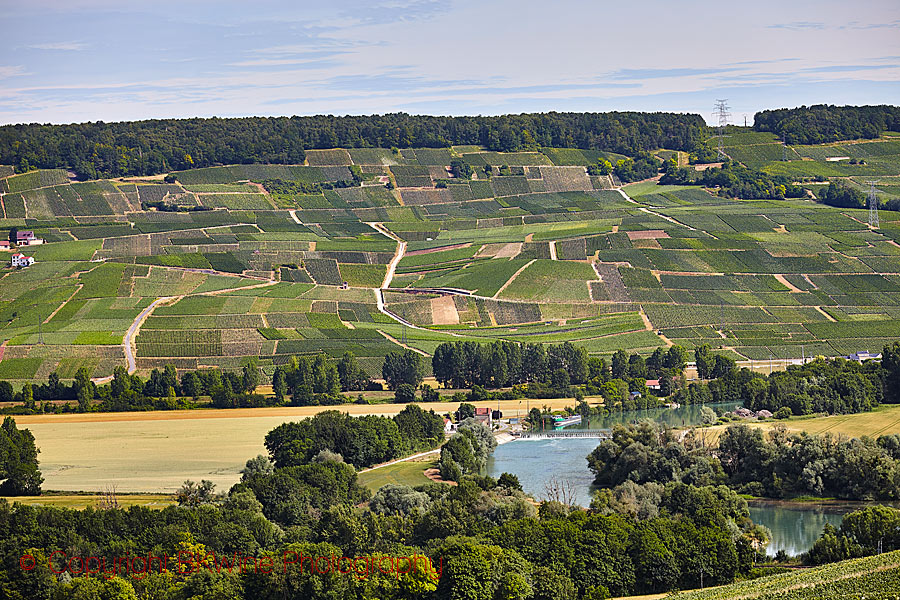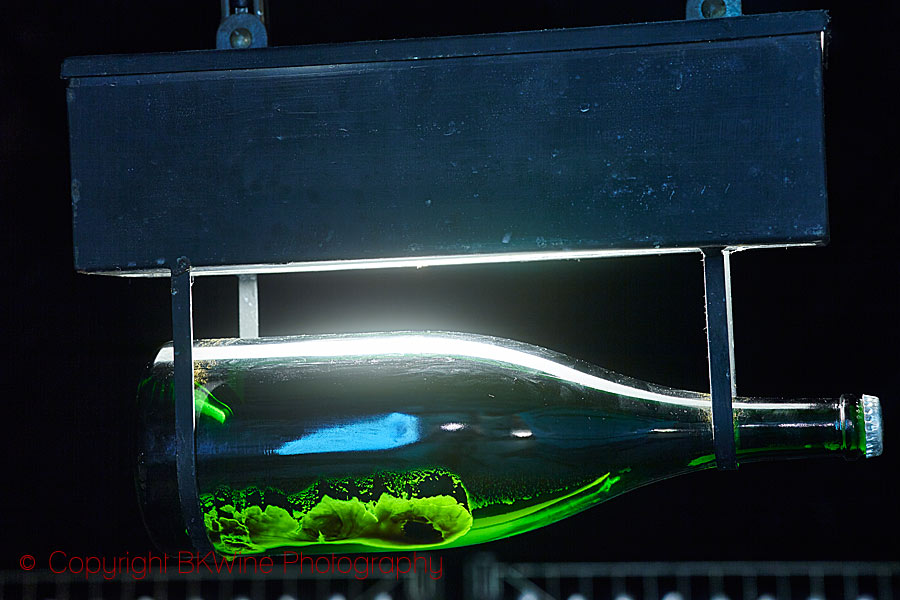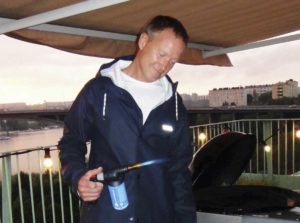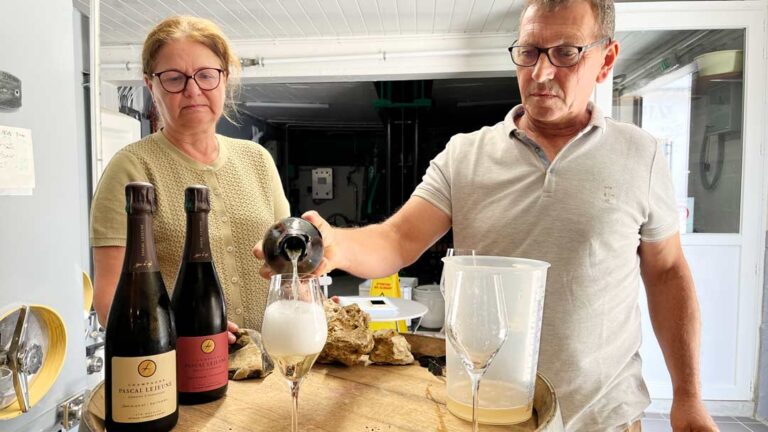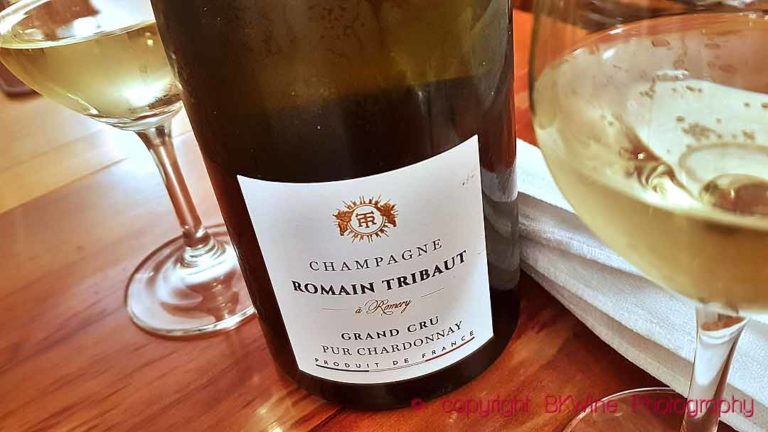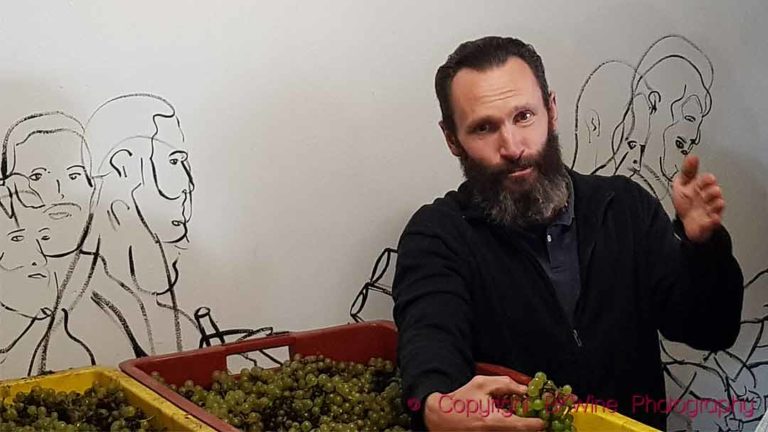A daring tasting with Oenoforos with base wines from Palmer & Co’s Blanc de Noirs.
When you produce champagne you always start by making a still wine without bubbles. This “base wine” is bottled with some yeast and sugar, and thus the bubbles are made. Few people get the chance to taste these still base wines, for good reasons. They can be difficult to understand and appreciate because they usually have an exceptionally high acidity. The acidity is needed to give freshness and elegance in the finished champagne. But Palmer & Co had the audacity to present their still base wines to a small group of journalists, to give a different perspective on their champagne. BKWine Magazine’s Sven-Olof Johansson was there and tells the story about the experience.
Two well-dressed and handsome French men stand at the podium and present the evening’s four wines. Rémi Vervier and Raymond Ringeval from Palmer & Co. have long realized the importance of the Swedish market. For their annual bottled production of about 800,000 bottles Sweden is this co-operative’s largest export market. The cooperative started in Avize in 1947 but after some time they grew out of their production facilities and moved to Reims in 1959. Today, the production comprises eight cuvées with a good representation at the Swedish monopoly Systembolaget.
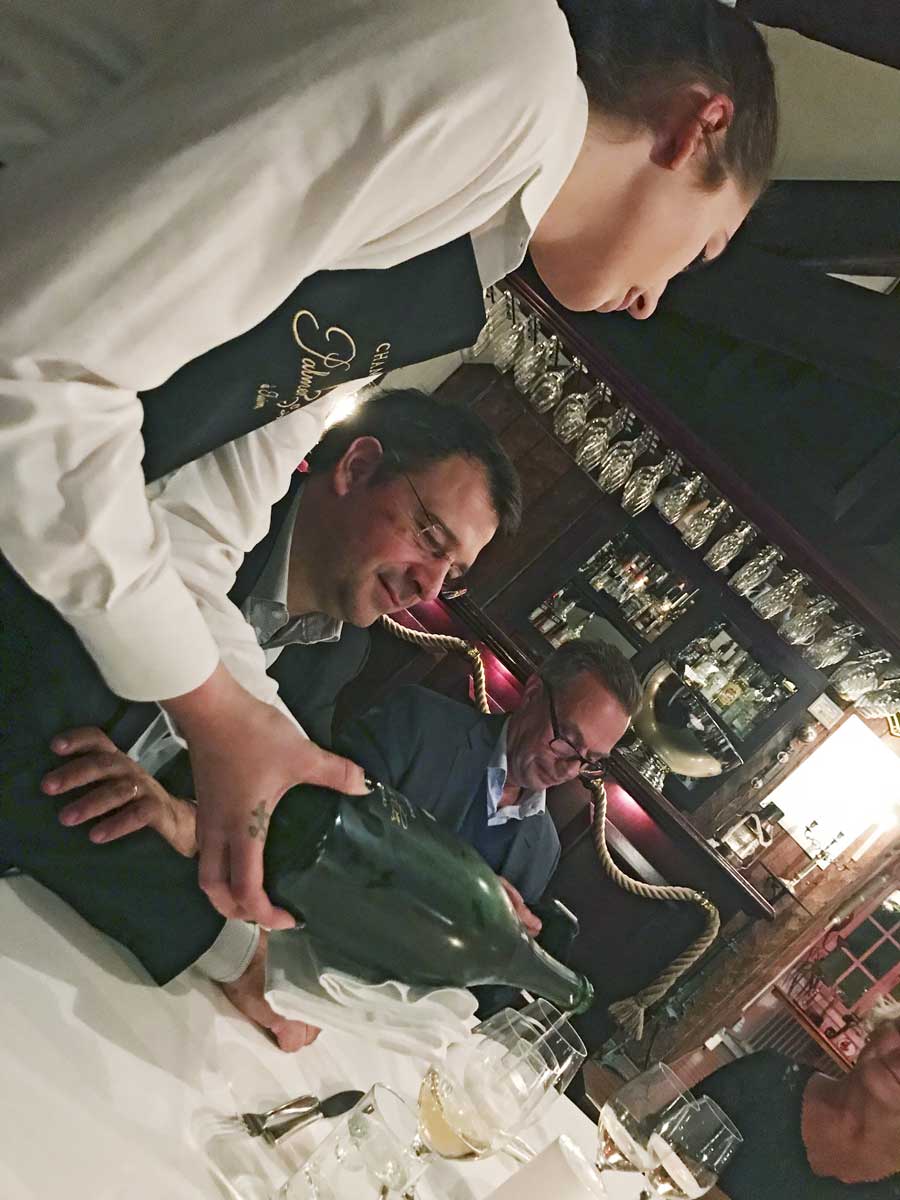
The theme of the evening was blanc de noir and the challenge they had created for themselves was to let the guests taste the “base wines” from 2017. The base wine is the raw material for the production of the sparkling wine that is finally released from the bottle in your home. The wine in its stripped-down form before bottling, with an addition of sugar and yeast, after which it is closed with a crown cap and the CO2 is produced. To put it simply, a semi-finished wine without CO2.
When Rémi Vervier had finished presentation and we moved on to tasting the first glass, I stole a quick glance at the assembled luminaries. Silence reigned and the concentration was palpable. Some sniffed a lightly above the glass while others dove down with the whole nose, everyone has their method of finding out the details of the wine in the glass. But when the glasses were brought to the mouth and the first sip filled the mouths, several surprised faces could be seen and maybe even a few screwed up faces. No, it was no ordinary tasting, the wine is not ready and the acidity is un-relinquishing high.
The tasting was with four base wines: Les Riceys 2017, Mailly-Verzenay 2017, Solera Mailly-Verzenay 2017, Blanc de Noirs Blend 2017. To try and describe each of them as a regular wine is hardly a sensible way to go. Possibly it could be for the cooperative’s own staff of five people who work with the blending, l’assemblage, before bottling. A highly competent group where the youngest holds the role for five years and the most experienced has 35 years of blending behind him.
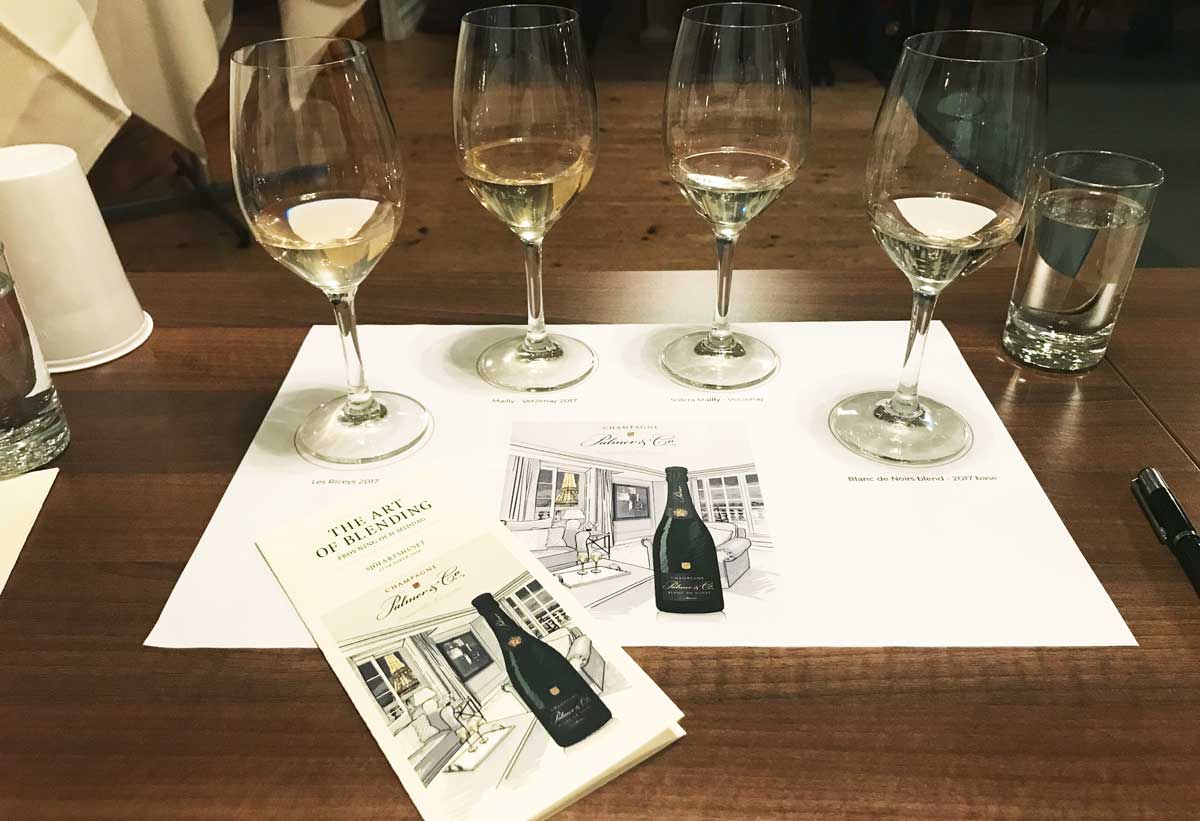
With the exception of the high acidity that was a common denominator for the wines, they definitely have different characters. In particular, the Solera Mailly-Verzenay, very refined from being in a solera with ten years of age. The mention of “solera” merits an explanation. It is, simply expressed, a tank where you take out 10-15% of the wine each year to be used in a cuvée and then you top up the tank with new wine. The following year, the process is repeated. Palmer is one of the few producers in Champagne that works with solera. They have three different soleras. One with Pinot Noir, started ten years ago and one with Chardonnay, started 35 years ago. The oldest is 40 years old and contains red wine. It is used for the production of rosé. An ambitious way to “season” the wines at the pace and tone you wish. A finished bottle of blanc de noir can be made up of 3-5% from a solera.
And the finished result then?
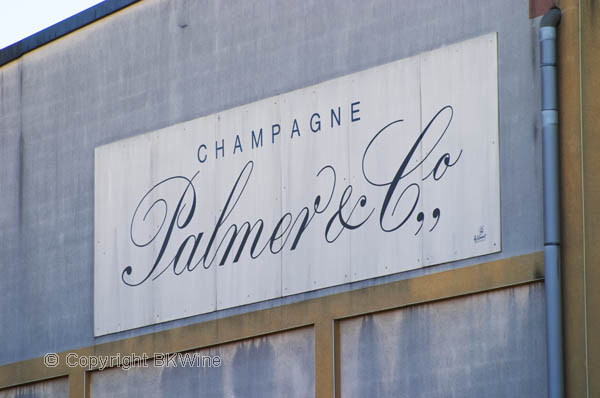
Mini-sandwiches with caviar and duck liver and buttery bread were put on the table. The importer, Oenoforos, took the very appreciated decision to do the final tasting with some food and with only two glasses – of the same wine! A glass from a magnum and a glass from a “half-magnum”. Both were blanc de noir with 50/50 pinot meunier and pinot noir, with 25-35% reserve wine and a dosage of between 6 and 7 gram / l.
There is no doubt that this is an excellent food wine, but the most interesting discovery was the significantly richer style in the wine from the magnum bottle. More and clearer details, minerals and toast in a pleasant mix. Cold facts tell that the standard bottle has been on its lees for 2-3 years while the magnum bottle had been on the lees for 4-5 years. The Frenchmen just shrug their shoulders and say that magnum is a better wine, it’s as simple as that. I would be very happy myself with the standard bottle for 35 euro which must be considered a very good price. (At Systembolaget)
In conclusion, a reflection on the difficulty of tasting blind.
Can you tell a grower’s champagne from a standard cuvée from a prestige champagne from a crémant? Of course, you answer, but imagine that you are in a live television broadcast. This is what happened in one of the morning programs on Swedish television with the host Jenny Alversjö faced with a choice of four different glasses served blind and four labels that she was challenged to assign to the glasses. Jenny did well, but she put the label with the text “prestige champagne 160 euro” in front of the glass that was filled with … yes indeed, Palmer & Co Brut Reserve for no more than 29 euro.
If you want to do the same test at home on your friends, maybe a Krug for 160 euro can be a bit expensive for an experiment. But then choose Palmer & Co Blanc de Noir and serve it – blind – with another champagne in the same price range. You only need a few extra glasses and this will be a rather fun exercise for the starter. At least for those who guess right.
Sven-Olof Johansson is a wine enthusiast in Stockholm with a long history of wine tasting experience.
[box type=”info” style=”rounded” border=”full”]
Travel: Taste many delicious champagnes and gourmet food on the wine tour to Champagne with BKWine.
Travel to the world’s wine regions with the wine experts and wine tour specialist.
The tastiest wine tours. BKWine wine tours.
[/box]
